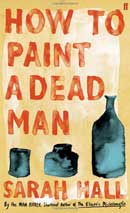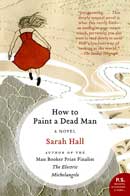
Imagine yourself leaping into a painting. Something Impressionistic, perhaps: rich with color so thick you skid through its juicy impasto and fall into its shimmering pointillist pools. That's more or less the way I felt reading Sarah Hall's new novel, How to Paint a Dead Man.
Although there is one complete novel here, it is in fact made up of four entwined stories. Each has its own protagonist, its own voice, its own urgent conflict:
As you read these interwoven tales, you'll discover that each protagonist's struggle is influenced by the others, often far away in another time or place. The connections gradually reveal themselves, one detail at a time, like a picture taking shape on a canvas. A series of "aha" moments adds the pleasure of parsing a mystery to a book that is essentially a collection of psychological portraits.
It's easy to see why Sarah Hall (former Booker Prize finalist) has garnered the critics' praise.
This book of only 288 pages stretches from pre-WWII to the present and investigates such heady topics
as the universality of art and the invisibility of truth. At the same time, it is peopled by characters
so vivid they'll take your hand and pull you through the pages. But I wager you'll pull back from time
to time, wanting to slow down and savor the words and images, the ideas and insights. Literary writing
doesn't get much better than this.


Faber & Faber, paperback, 9780571224890
Harper Perennial, paperback, 9780061430459